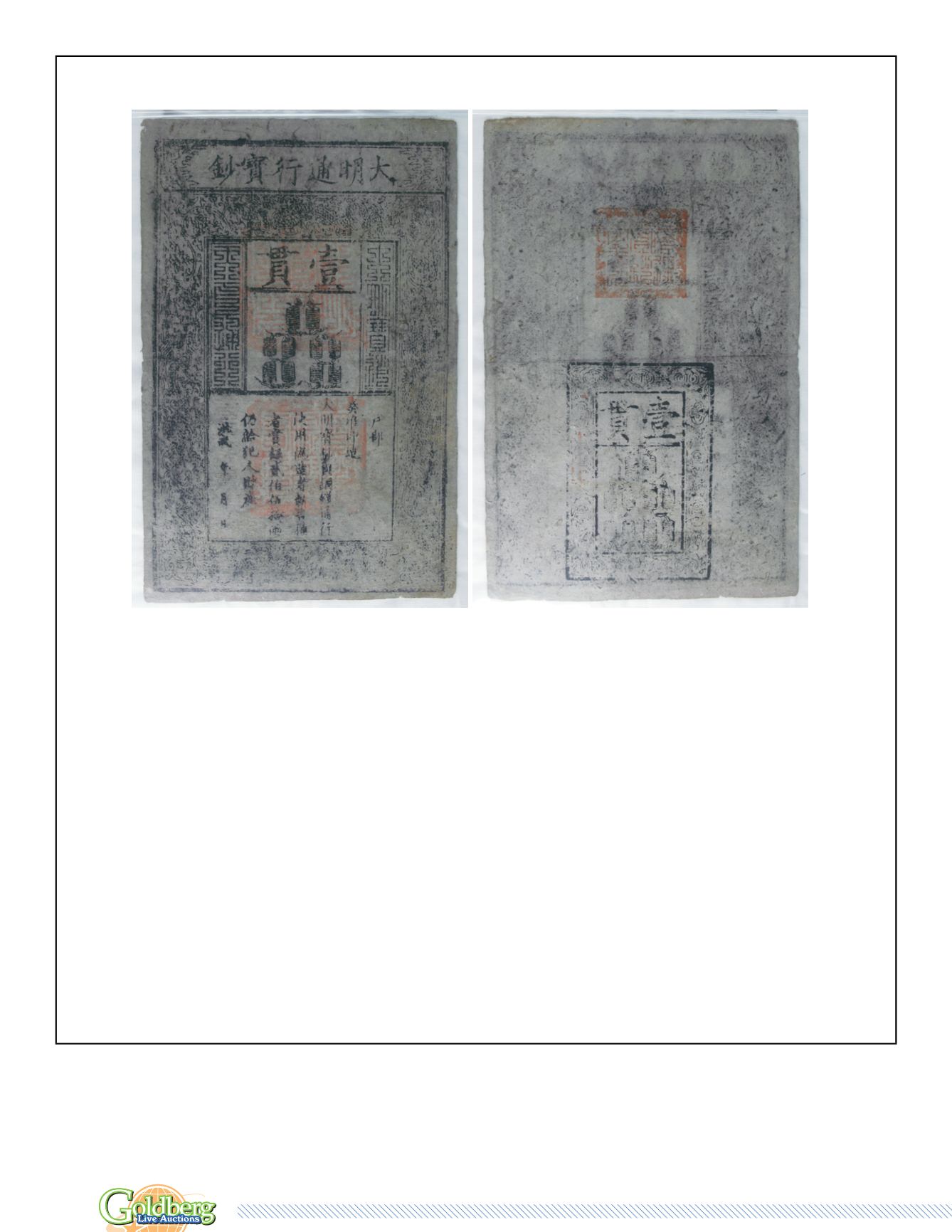
130
|
World Crowns and Minors
R
ARE
D
A
M
ING
B
AO
C
HAO
1 K
UAN
3997
China - Empire. Ming Dynasty, Da Ming Bao Chao 1 Kuan, ND (1375-1398).
. Pick # AA10, S/M # T36-20. Emperor Zhu Yuanzhang
the "Tai Zu". An iconic piece with exceptional overall condition and impressive ink quality after suffering 600 years.
PMG AU-53 Net, Tears
Foreign Substance.
A hint of crease in the middle and couple paper flaws through the right part as made.
China was the first country that formed an efficient central government over a multi-state continent with one national law, one monetary sys-
tem, one military policy, and one governor nominating examination designed by the court of the ruler in human history. Therefore, scholars
have been studying the early financial system and governmental credit effects of Imperial China for centuries. A fascinating phenomenon that
attracted most attention would be that China was able to use paper money to replace metal coinage in medieval and early Renaissance times,
when money exchanging was still such a big problem even between towns only couple miles away from each other in Europe. And this great
note we're offering here presents this part of history.
On the obverse, the denomination was shown in the middle, which is 1 Kuan, equals to 1,000 Chinese copper 1 cash coins back then. In the
right and left column, the Chinese characters were written in a special style called "Zuan Shu", saying "The currency of the Great Ming Empire
could be circulated all through the country". On the bottom, an announcement showing that this note has the equivalent value of copper coin-
age (silver coinage was still not common at that period of time in Ming Dynasty), any forging attempts would be sentenced to execution, and
the reporter would be rewarded 250 Tael silver and a part of the counterfeiter's property. Around the inscription, the note was beautifully dec-
orated with dragon, passionflower, and cloud patterns. Two vermilion seals were stamped by the government to certify the authenticity. On
the reverse, there's a smaller denomination shown on the bottom together with another vermilion seal on the top.
The Ming notes are much rarer than Qing notes, due to the inflation and later wars, and not many hoards were found. According to the con-
signor, the first hoard of Ming notes was found during the 1900's, right after the war against the Boxers, while the second hoard which con-
tains this one was found during the 1930's in an old temple in Beijing. A Norwegian missionary hand selected this note as the best one from
that hoard, and after his death, this note was passed through a British dealer and later verified by the British Museum.
This note has the best overall condition among all the pieces the cataloger have ever seen, and the unheard of AU-53 grade proved this real-
ity.
Estimated Value ................................................................................................................................................................... $10,000-UP


